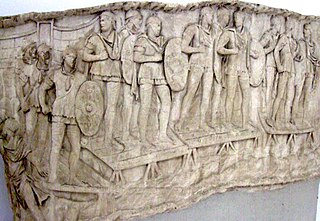 W
WThe Auxilia were introduced as non-citizen troops attached to the citizen legions by Augustus after his reorganisation of the Imperial Roman army from 30 BC. By the 2nd century, the Auxilia contained the same number of infantry as the legions and, in addition, provided almost all of the Roman army's cavalry and more specialised troops. The auxilia thus represented three-fifths of Rome's regular land forces at that time. Like their legionary counterparts, auxiliary recruits were mostly volunteers, not conscripts.
 W
WIn ancient Rome the Latin word adlocutio means an address given by a general, usually the emperor, to his massed army and legions, and a general form of Roman salute from the army to their leader. The research of adlocutio focuses on the art of statuary and coinage aspects. It is often portrayed in sculpture, either simply as a single, life-size contraposto figure of the general with his arm outstretched, or a relief scene of the general on a podium addressing the army. Such relief scenes also frequently appear on imperial coinage. The adlocutio is one of the most widely represented formulas of Roman art. The convention is regularly shown in individual figures like the famous Augustus of Prima Porta or can be put into a narrative context as seen in the Aurelian panel. Gestures and body language are crucial for the study of adlocutio in ancient times, as addressing to thousands of soldiers was less penetrable by voice compared to body language and gestures which were more powerful, infectiously raising the army's enthusiasm. Characteristic of the formula is the outstretched hand of speech as well as the contrapposto pose with the weight clearly shifted to one leg. Much information about adlocutio can be interpreted by these sculptures.
 W
WIn the Roman Empire during Late Antiquity, the adventus was a ceremony held to celebrate the arrival at a city of a Roman emperor or other dignitaries. The imperial adventus was the period's "ceremonial par excellence", celebrating both the emperor's arrival and the blessing of the imperial presence itself on the city's security. The term is also used to refer to artistic depictions of such ceremonies.
 W
WThe Ala Afrorum, or Ala Afrorum Veterana, was a Roman cavalry unit founded in Africa Proconsularis. The unit formed an ala quinquagenaria; with a total of about 500 cavalrymen. In the first half of the 1st century AD the unit moved from this area to Europe, and was based in Moesia. At the time of the Batavian rebellion the unit was sent to the present Dutch part of Germania Inferior to support the Roman troops.
 W
WAla Gallorum Petriana was a Roman auxiliary unit. It is attested by military diplomas and inscriptions: in one inscription it is referred to as Ala Augusta Petriana; in other inscriptions, Tacitus in his Histories, and in the Notitia dignitatum it is called Ala Petriana.
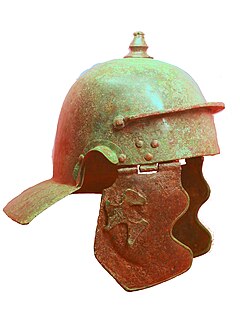 W
WThe Alpine regiments of the Roman army were those auxiliary units of the army that were originally raised in the Alpine provinces of the Roman Empire: Tres Alpes, Raetia and Noricum. All these regions were inhabited by predominantly Celtic-speaking tribes. They were annexed, or at least occupied, by the emperor Augustus' forces during the period 25–14 BC. The term "Alpine" is used geographically in this context and does not necessarily imply that the regiments in question were specialised in mountain warfare. However, in the Julio-Claudian period, when the regiments were still largely composed of Alpine recruits, it is likely that they were especially adept at mountain operations.
 W
WThis article concerns the Roman auxiliary regiments of the Principate period originally recruited in the western Alpine regions of the empire. The cohortes Alpinorum came from Tres Alpes, the three small Roman provinces of the western Alps, Alpes Maritimae, Alpes Cottiae and Alpes Graiae. The cohortes Ligurum were originally raised from the Ligures people of Alpes Maritimae and Liguria regio of NW Italia.
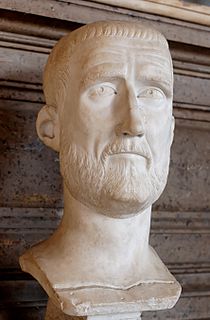 W
WA barracks emperor was a Roman Emperor who seized power by virtue of his command of the army. Barracks emperors were especially common in the period from 235 through 284, during the Crisis of the Third Century that began with the assassination of Severus Alexander. Beginning with Maximinus Thrax, there were approximately fourteen barracks emperors in 33 years, producing an average reign of a little over two years apiece. The resulting instability in the imperial office and the near constant state of civil war and insurrection threatened to destroy the Roman Empire from within and left it vulnerable to attack from external adversaries.
 W
WCastra ad Fluvium Frigidum, also simply Castra, referred to as mutatio Castra in Itinerarium Burdigalense, was a Late-Roman fortress (castrum) which constituted the centre of Claustra Alpium Iuliarum, an Ancient Roman defensive system of walls and towers stretching from the Gail Valley to the Učka mountain range. On its grounds, the Late Medieval market settlement of Ajdovščina developed.
 W
WThe Castra Peregrina was a castrum in Rome situated on the Caelian Hill. It was occupied by various military units during the later part of the Roman Empire.
 W
WCohors prima Flavia Canathenorum [sagittaria] [milliaria] was a Roman auxiliary cohort of infantry.
 W
WThe Cohors II Lucensium [equitata] was a Roman auxiliary unit. It is attested by military diplomas and inscriptions.
 W
WCohors quarta Gallorum equitata was a Roman auxiliary cohort containing both infantry and cavalry contingents. It was probably raised in Gallia Lugdunensis at the time of the founder-emperor Augustus. It is first attested in Moesia in 75 AD and was still in Moesia Inferior in 105. It therefore probably took part in the emperor Trajan's Dacian Wars (99-106). After a brief stay in Thracia, it was transferred to Britannia not later than 122. Its last datable attestation is in 276-82 at Vindolanda. But the Notitia Dignitatum, a late Roman official document, records a cohors IV Gallorum at Vindolanda under the dux Britanniarum, the commander of limitanei along Hadrian's Wall. The Western section of the Notitia was drawn up in the 420's but the British units must date to before 410, when the island was evacuated by the Roman army.
 W
WIn ancient Roman religion, the devotio was an extreme form of votum in which a Roman general vowed to sacrifice his own life in battle along with the enemy to chthonic gods in exchange for a victory. The most extended description of the ritual is given by the Augustan historian Livy, regarding the self-sacrifice of Decius Mus. The English word "devotion" derives from the Latin.
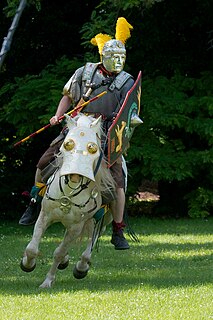 W
WThe hippika gymnasia were ritual tournaments performed by the cavalry of the Roman Empire to both practice their skills and display their expertise. They took place on a parade ground situated outside a fort and involved the cavalry practicing manoeuvring and the handling of weapons such as javelins and spears. The riders and their mounts wore highly elaborate armour and helmets specially made for display purposes, decorated with images from classical mythology. Such tournaments served several purposes, improving the riders' skills, helping to build unit morale and impressing dignitaries and conquered peoples.
 W
WThe honesta missio was the honorable discharge from the military service in the Roman Empire. The status conveyed particular privileges. Among other things, an honorably discharged legionary was paid discharge money from a treasury established by Augustus, the Aerarium militare, which amounted to 12,000 sesterces until the Principate of Caracalla.
 W
WIn modern scholarship, the "late" period of the Roman army begins with the accession of the Emperor Diocletian in AD 284, and ends in 476 with the deposition of Romulus Augustulus, being roughly coterminous with the Dominate. During the period 395–476, the army of the Roman Empire's western half progressively disintegrated, while its counterpart in the East, known as the East Roman army remained largely intact in size and structure until the reign of Justinian I.
 W
WThe Roman army of the mid-Republic, also called the manipular Roman army or the Polybian army, refers to the armed forces deployed by the mid-Roman Republic, from the end of the Samnite Wars to the end of the Social War. The first phase of this army, in its manipular structure, is described in detail in the Histories of the ancient Greek historian Polybius, writing before 146 BC.
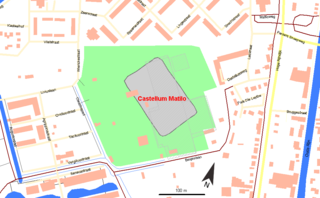 W
WMatilo or Matilone was once a Roman fort (castellum) in modern-day Leiden. Positioned on the southern banks of the Oude Rijn, it served to protect the Roman borders in the province of Germania inferior. On the Peutinger map, it lies between the encampments of Albaniana and Praetorium Agrippinae (Valkenburg). The seventh-century Ravenna Cosmography gives its name as Matellionem.
 W
WThe profectio was the ceremonial departure of a consul in his guise as a general in Republican Rome, and of an emperor during the Imperial era. It was a conventional scene for relief sculpture and imperial coinage. The return was the reditus and the ceremonial reentry the adventus.
 W
WIn the constitution of ancient Rome, prorogatio was the extension of a commander's imperium beyond the one-year term of his magistracy, usually that of consul or praetor. Prorogatio developed as a legal procedure in response to Roman expansionism and militarization; the number of annexed territories and theaters of operations outgrew the number of elected officials available to take on military and administrative duties.
 W
WThe Roman army was the armed forces deployed by the Romans throughout the duration of Ancient Rome, from the Roman Kingdom to the Roman Republic and the Roman Empire, and its medieval continuation, the Eastern Roman Empire. It is thus a term that may span approximately 2,205 years, during which the Roman armed forces underwent numerous permutations in composition, organisation, equipment and tactics, while conserving a core of lasting traditions.
 W
WIn Roman Dacia, an estimated 50,000 troops were stationed at its height.
 W
WThe Roman army of the late Republic refers to the armed forces deployed by the late Roman Republic, from the beginning of the first century B.C. until the establishment of the Imperial Roman army by Augustus in 30 B.C.
 W
WThis article lists auxilia, non-legionary auxiliary regiments of the imperial Roman army, attested in the epigraphic record, by Roman province of deployment during the reign of emperor Hadrian.
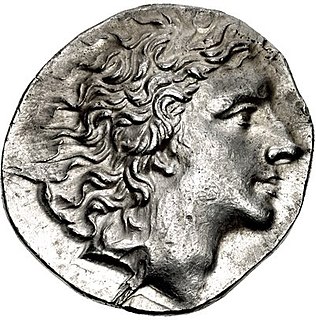 W
WRoman command structure during First Mithridatic War refers to the chain of command of the forces sent east by the government of Rome to exercise the Mithridatic War mandate, requiring those forces to defeat Mithridates VI of Pontus, who had evoked the ire of the Senatus Populusque Romanus (SPQR) by slaughtering all the Romans his adherents could find on a single, pre-arranged day, an event now termed the Asiatic Vespers. Previously in Roman history the war and the command structure would have been straightforward: the Senate would declare war, and the mandate to carry it out would be assigned to one of the two consuls elected for the year, with both being assigned if necessary, and ex-consuls being available as generals with the rank of proconsul. For a small war the consul might give the task to an immediate subordinate, a praetor, or if the task was small enough, a legate.
 W
WRoman military borders and fortifications were part of a grand strategy of territorial defense in the Roman Empire, although this is a matter of debate. By the early 2nd century, the Roman Empire had reached the peak of its territorial expansion and rather than constantly expanding their borders as earlier in the Empire and Republic, the Romans solidified their position by fortifying their strategic position with a series of fortifications and established lines of defense. Historian Adrian Goldsworthy argues that the Romans had reached the natural limits which their military traditions afforded them conquest over and that beyond the borders of the early-to-mid Empire lay peoples whose military traditions made them militarily unconquerable, despite many Roman battle victories. In particular, Goldsworthy argues that the cavalry-based warfare of the Parthians, Sarmatians and Persians presented a major challenge to the expansion of Rome's infantry-based armies.
 W
WThe Roman shipyard of Stifone is an archaeological find of Roman origin recently discovered in Umbria, in the municipality of Narni, inside an artificial channel adjacent the Nera River, about 900 metres down-river from the village of Stifone. Its position is just behind the remains of the river port of the ancient city of Narni.
 W
WDogs in warfare have a very long history starting in ancient times. From being trained in combat, to their use as scouts, sentries, messengers, mercy dogs, and trackers, their uses have been varied and some continue to exist in modern military usage.
 W
WThe strategy of the Roman military contains its grand strategy, operational strategy and, on a small scale, its military tactics. If a fourth rung of "engagement" is added, then the whole can be seen as a ladder, with each level from the foot upwards representing a decreasing concentration on military engagement. Whereas the purest form of tactics or engagement are those free of political imperative, the purest form of political policy does not involve military engagement. Strategy as a whole is the connection between political policy and the use of force to achieve it.
 W
WThe vine staff, vine-staff, or centurion's staff was a vinewood rod of about 3 feet (1 m) in length used in the ancient Roman Army and Navy. It was the mark and tool of the centurion: both as an implement in the direction of drill and maneuvers; and to beat wayward or laggard soldiers or sailors under his command. It was also borne by evocati who held an equivalent rank.